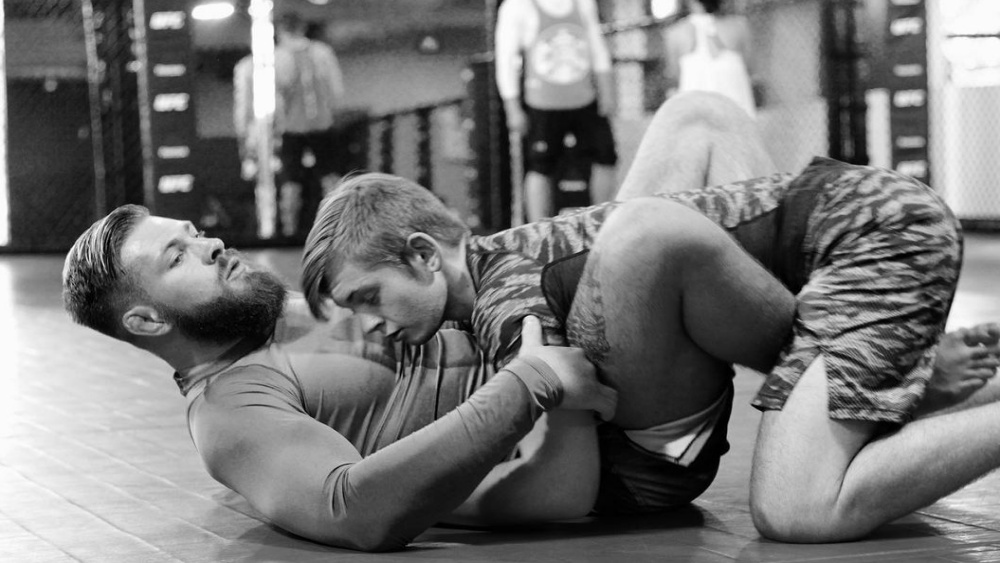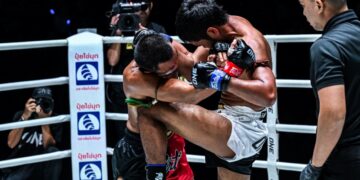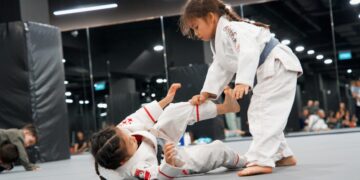
Brazilian Jiu-Jitsu is a martial art emphasizing ground fighting and positional dominance. One of the critical aspects of BJJ is the ability to pass the guard. The seated guard, a dynamic variation where the bottom player sits up rather than lying down, presents unique challenges and opportunities. This article will explore various techniques and strategies to pass the seated guard in Jiu-Jitsu.
Understanding The Seated Guard
The seated guard is a versatile and dynamic position offering offensive and defensive options for the player on the bottom. Understanding the mechanics and objectives of the seated guard is essential for successfully passing it. The bottom player sits up with their legs in front, using their arms and legs to control distance and attack. The objectives of the bottom player are to sweep, submit, or transition to a more dominant position, while the top player seeks to pass the guard and advance.
General Principles For Passing The Seated Guard
Managing the distance is crucial in passing the seated guard. Stay close enough to engage but far enough to avoid sweeps and submissions. Winning the grip fight is essential for controlling and setting up the pass. Maintain strong posture and apply pressure to limit the bottom player’s mobility. Be ready to adapt and switch between different passing techniques as the situation evolves. These principles form the foundation of a successful guard-passing strategy.
Techniques For Passing The Seated Guard
There are many ways to pass the seated guard. In BJJ, you have the freedom to choose a handful of techniques to work on depending on particular situations. With guard passing, it is especially important to note that you can be as dynamic as you want, provided that you understand the underlying techniques you use. Below are several options to choose from if you want to pass the seated guard. Notice that many of these techniques can also be applied in the supine (lying on the back) position.
1) Knee-Cut Pass
The knee cut or knee slice pass is a classic and effective way to pass the seated guard. Establish strong grips on the collar and sleeve or the knee. Step in and slide your knee across the opponent’s thigh, slicing through their guard. A successful knee-cut pass opens up pinning opportunities to secure a dominant position. The knee-cut pass requires precision and timing but can be a powerful tool in your passing arsenal.
2) X Pass
The X pass is a dynamic and quick pass that can be used against a seated opponent. Control the opponent’s legs and establish a strong base. Kick your legs back in an “X” motion, clearing the legs, and circle around to side control or take the back. The X pass is particularly effective against opponents who rely on active leg movements to defend and attack.
3) Long Step Pass
The long step pass is a powerful way to bypass the seated guard by using a wide stepping motion. Control the opponent’s upper body or legs, take a long step back with one leg, pull the opponent’s legs in the opposite direction, and settle into side control or transition to another dominant position. The long step pass can be used to surprise an opponent and quickly change the dynamics of the match.
4) Toreando (Bullfighter) Pass
The Toreando pass is a classic pass that can be adapted to the seated guard. Grip the opponent’s pants or ankles, move laterally, and use a bullfighting motion to push the legs to the side, and pass to side control or another favorable position. The Toreando pass requires agility and coordination but can be a highly effective passing technique.
5) Leg Drag Pass
The leg drag pass is versatile and can be used against various guard positions, including the seated guard. Control one of the opponent’s legs, drag the leg across your body, pinning it down, and secure side control or take the back. The leg drag pass is a technical move that requires practice but offers excellent control and passing opportunities.
Strategic Considerations
Passing the seated guard requires precise timing and quickly switching between techniques. Maintain a strong base and balance to prevent sweeps and counters. Anticipate the opponent’s movements and be ready to counter their attacks. Stay patient and look for openings, as passing the guard, especially against a skilled opponent, may take time. Understanding the opponent’s tendencies and adapting your strategy accordingly can be the key to successful guard passing.
Typical Mistakes
Avoid overcommitting to a single pass, as it may lead to a counter or sweep. Maintain strong posture to prevent being pulled into a compromised position. Neglecting the grip fight can lead to losing control and failed pass attempts. Being aware of these common mistakes and actively working to avoid them can enhance your ability to pass the seated guard effectively.
Drilling And Practice
Like any skill in BJJ, passing the seated guard requires consistent drilling and practice. Working with training partners of different skill levels and body types can provide valuable experience and insights. Focus on the details of each technique, and don’t be afraid to ask for feedback from instructors or more experienced practitioners. Live sparring and situational drilling can also help you apply the techniques in real time, building confidence and proficiency.
Conclusion
Passing the seated guard in BJJ is a complex and multifaceted task that requires a combination of technical skill, strategic thinking, and physical attributes. From understanding the seated guard’s dynamics to mastering various passing techniques, the process is both challenging and rewarding.
The ability to pass the seated guard is a valuable skill that can elevate your BJJ game, allowing you to control and dominate opponents in various situations. By focusing on principles like distance control, grip fighting, pressure, and adaptation, and mastering techniques like the knee cut, X pass, long step, Toreando, and leg drag, you can develop a comprehensive and practical approach to passing the seated guard.
Remember, practice and repetition are key. Work with training partners, drill the techniques, and apply them in live sparring to build confidence and proficiency in passing the seated guard. It’s a journey of continuous learning and growth, reflecting the beauty and depth of Brazilian Jiu-Jitsu.
You may also like:
Elevate Your BJJ Game Using The Kimura Trap
What Is The Octopus Guard In BJJ?
Brazilian Jiu-Jitsu is a combat art that emphasizes ground fighting, controlling tactics, and submission holds. It’s a complex and intricate sport that requires not only physical strength but also strategic thinking and precise technique. One…
Brazilian Jiu-Jitsu is a martial art that offers a vast array of techniques, each with its unique mechanics and applications. Among these techniques, shoulder locks hold a special place in most practitioners’ games due to…
Born on July 8, 1996, ONE Women’s Atomweight MMA World Champion “Unstoppable” Angela Lee is a professional mixed martial artist, who is part of a family deeply rooted in martial arts; both of her parents…
Brazilian Jiu-Jitsu is widely known for its advanced guard system. In training and competition, many BJJ practitioners pull guard to go straight to the ground. While pulling guard can be a divisive topic for most…
Brazilian Jiu-Jitsu (BJJ) is a martial art that places a significant emphasis on ground fighting and submission holds. It is a sport that requires not only physical strength but also strategic thinking and technical prowess….
One of the most effective ways to subdue a resisting opponent is to put their hands behind their back. This is easier said than done, though, as you’ll surely get a lot of resistance before…
The Peekaboo style of boxing is one that is unique in its concepts and execution in the ring. It was first developed by Constantine “Cus” D’amato, trainer to the legendary Mike Tyson. Focusing on a…
The elbow strike is a brutal short-range weapon used in Muay Thai. The force and damage that can be inflicted can be devastating and the results can quickly end a fight. Elbow strikes pack a…
Switch hitting is an advanced concept that can revolutionize your MMA game. Beginners are often discouraged from exploring switch hitting primarily due to the added complexity and increased training time required. However, even a basic…
Professional boxing is not dead. But there are legitimate concerns over the future of the “sweet science” as it approaches a concerning crossroad. While the sport has retained much of its character over centuries, it…
At the core of Muay Thai is the essence, the “Art of the Eight Limbs”. Understanding the weapons you can possess and how to utilize them is just the beginning of the Muay Thai journey….
Martial arts is a physically demanding discipline that requires strength, endurance, flexibility, and coordination. It’s not just about throwing punches or executing high kicks; it’s about moving your body in a way that maximises power,…




































